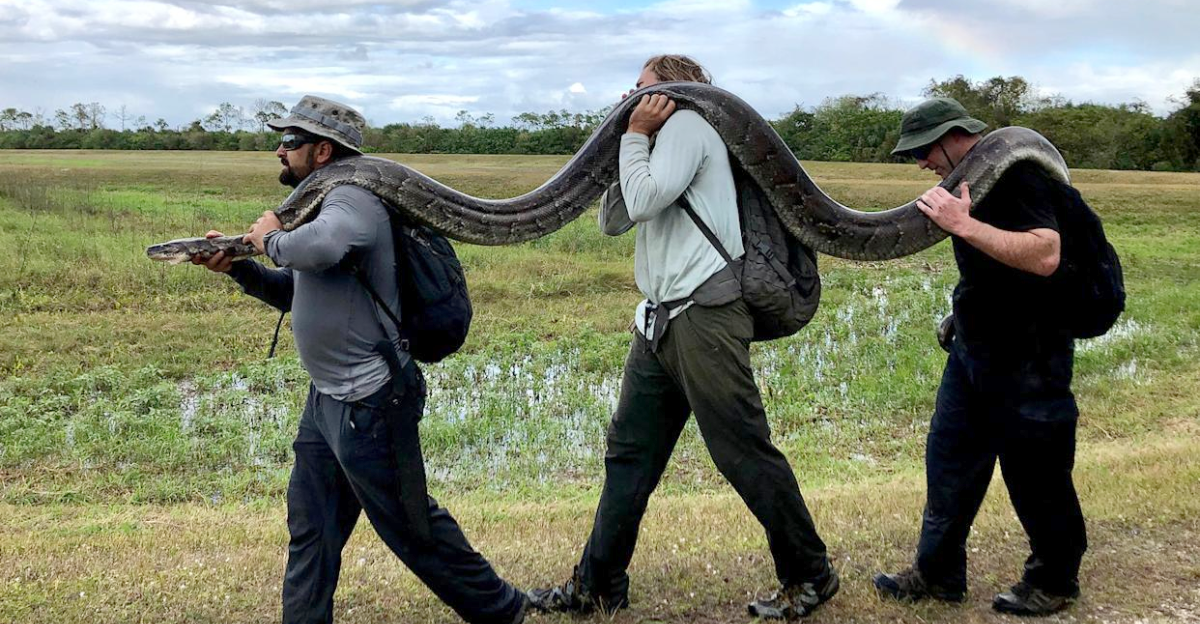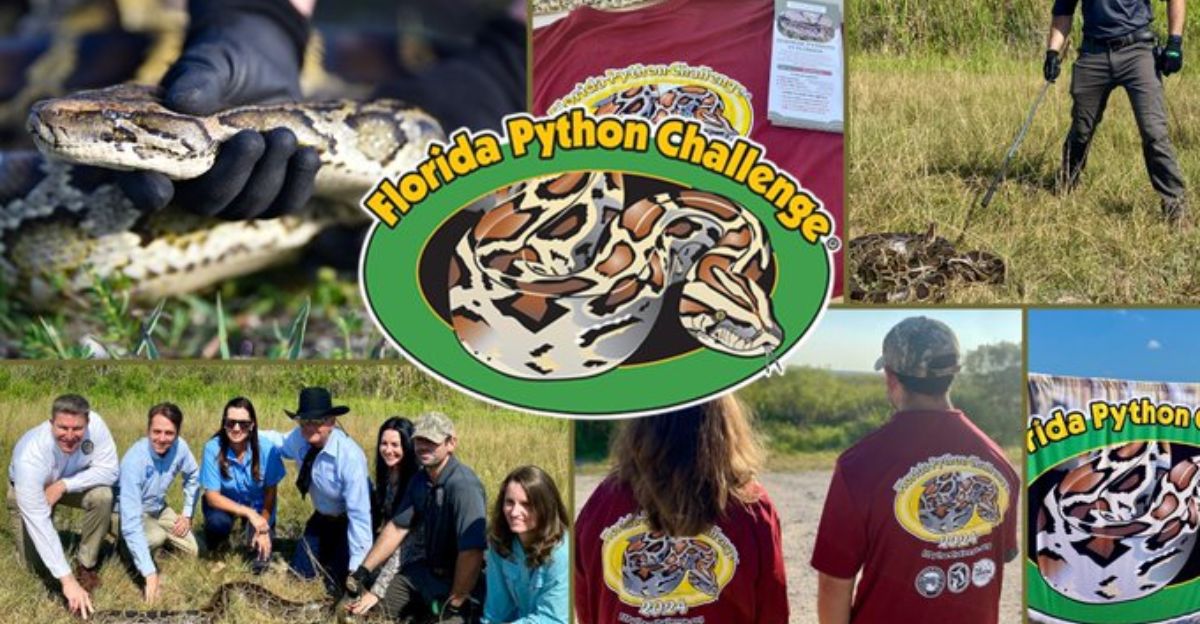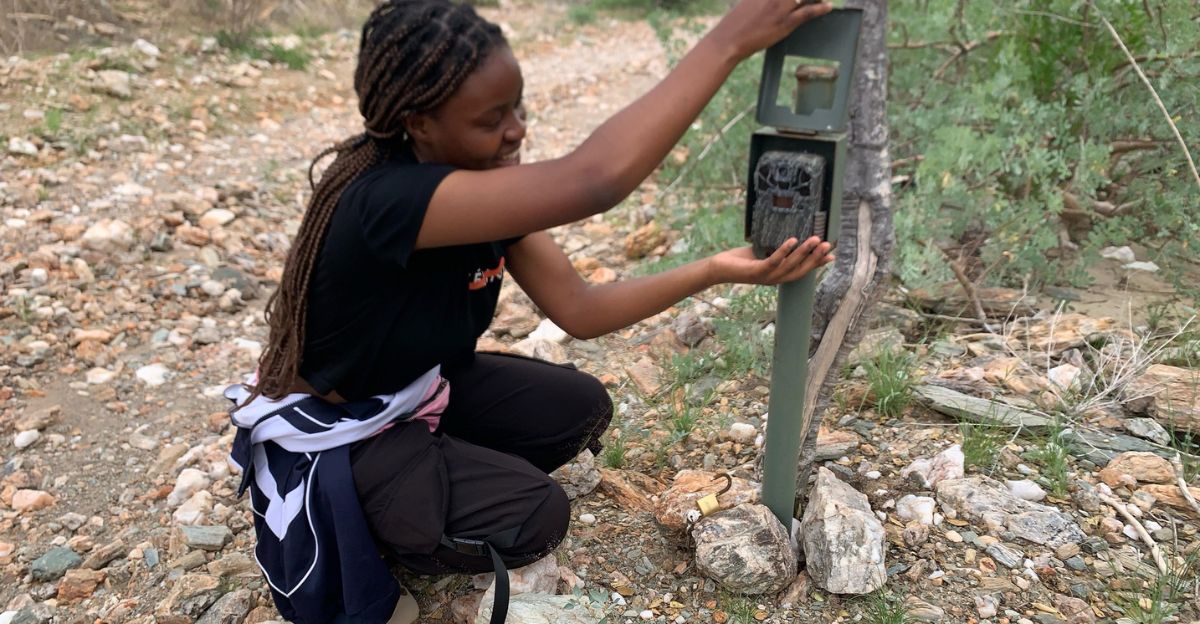
The idea of giant snakes overrunning Florida sounds like an urban legend, but the truth is far more disturbing. Earlier last week, the Conservancy of Southwest Florida reported they’d removed over 20 tons of Burmese pythons from just a 200-square-mile zone since 2013. This past season alone, 6,300 pounds were captured.
Yet experts warn that tens of thousands more are still out there, silently ravaging native species. These snakes now represent one of the most difficult invasive species challenges on Earth.
How did Florida end up with this ecological crisis? The answer involves pet owners, hurricanes, and a failure to act before it was too late. Let’s unravel how this slow-burning catastrophe spiraled out of control.
When Exotic Pets Become an Ecological Nightmare

Florida’s python crisis didn’t appear overnight; it grew quietly over decades. Between 1996 and 2006, nearly 99,000 Burmese pythons were legally imported into the U.S. as pets. Cute at first, these snakes can quickly grow into 20-foot giants weighing over 200 pounds. Many owners, overwhelmed and unprepared, released them into the wild, especially after Florida banned private ownership of invasive reptiles.
The first wild python was found in 1979, but their numbers stayed under the radar until the late 1990s. By then, these elusive predators had already established breeding grounds. A mix of pet trade demand, lax regulations, and the snake’s stealthy biology created the perfect storm.
The Hurricane That Unleashed a New Predator

While the pet trade set the stage, one massive weather event turned a growing problem into a runaway disaster. In August 1992, Hurricane Andrew tore through South Florida with winds topping 150 mph, destroying several exotic animal breeding facilities. Among the escapees were thousands of Burmese pythons, suddenly released into the wild.
This unintentional mass release turbocharged the already forming python population. The storm’s chaotic aftermath handed these predators an open door to the Everglades, where they began breeding unchecked. Decades later, the ecological consequences of that storm still ripple through South Florida’s wetlands.
When Predators Reshape the Food Chain

The python invasion has devastated the Everglades’ native mammals. In heavily colonized areas, species like raccoons, opossums, bobcats, rabbits, and foxes have declined by more than 99%. These aren’t slight population shifts—they’re signs of ecological collapse. Burmese pythons are non-discriminating hunters, preying on over 85 bird, reptile, and mammal species, including deer and endangered wildlife.
Their dominance has disrupted long-established food webs. In some cases, these disruptions produce strange side effects, like improved turtle nesting rates due to fewer egg-eating predators. But even those “benefits” signal deeper ecological imbalance.
Why They’re So Hard to Find

Burmese pythons are nearly invisible to the naked eye, which is part of why the crisis grew undetected for so long. Hunters report finding just 1% of the pythons in areas they search. With cryptic coloring and the ability to remain motionless for days, these snakes blend seamlessly into the Everglades’ dense vegetation.
They spend 85% of their time completely still and move with near silence when they do. These traits make accurate population estimates extremely difficult, with guesses ranging from tens of thousands to several hundred thousand. Traditional wildlife tracking doesn’t work, forcing scientists to get creative.
Turning the Snake Against Itself

One of Florida’s smartest tools in this battle is also one of its most surprising. The state now implants radio transmitters in male pythons, then releases them to lead hunters to hidden breeding females. These “scout snakes” roam freely, unknowingly helping humans track reproductive hotspots during mating season.
Forty tagged males are currently monitored across 200 square miles. Since 2013, this method has prevented an estimated 20,000 eggs from hatching. It’s also helped capture record-breaking pythons, including an 18-foot female weighing 215 pounds. By using the pythons’ own instincts against them, scientists have flipped the script on invasive control.
The Birth of the Python Economy

Florida has turned this environmental crisis into an emerging industry. The state pays hunters to humanely remove pythons, with prize-based challenges drawing competitors from across North America. The 2024 Florida Python Challenge attracted 857 participants from 33 states and Canada. In just 10 days, they removed 195 snakes. The top hunter took home $10,000 for capturing 20 pythons.
Since 2017, over 14,000 pythons have been removed by professionals. Beyond bounty hunting, jobs now exist in snake tracking, ecological monitoring, and data collection. Some companies are even experimenting with python leather and meat, creating potential markets that could fund long-term efforts.
Digital Tools Meet Ancient Threats

Florida’s python control efforts now rely heavily on digital innovation. In partnership with Esri, the South Florida Water Management District uses apps to streamline tracking and removal. Hunters input field data using ArcGIS Survey123, navigate zones via ArcGIS Field Maps, and program managers analyze patterns through ArcGIS Dashboards.
Advanced tools like radio telemetry, environmental DNA analysis, and AI detection are also in use. These technologies offer a glimpse into the future of conservation, where software and sensors help tackle problems that human eyes can’t always see. In this arms race, technology may be our best weapon.
From Elimination to Control

The painful truth is, complete eradication is off the table. Florida’s wildlife managers now focus on managing, not eliminating, python populations. The Florida Python Control Plan, created by 15 organizations across government, tribal, and environmental sectors, reflects this shift. It focuses on four pillars: regulation, control, research, and communication. This approach accepts that the python problem won’t disappear, but with coordination, it can be contained.
It’s a practical model for managing other invasive species, especially as climate change and global trade make such threats more common. The key takeaway: containment, not conquest, is the new goal.
A Warning from the Everglades

Florida’s python crisis is more than a local disaster, it’s a global wake-up call. The 20-ton milestone is both a victory and a warning. As global trade grows and warming climates shift species ranges, invasive threats are becoming harder to predict and prevent. Once invasive species establish themselves, removal becomes nearly impossible. T
he Everglades show how quickly ecosystems can unravel and how human choices, like exotic pet ownership or weak regulation, can trigger lasting damage. Solving these challenges will take more than science. It’ll require long-term commitment, cross-border cooperation, and a willingness to rethink how we manage our planet’s biological future.
Explore more of our trending stories and hit Follow to keep them coming to your feed!

Don’t miss out on more stories like this! Hit the Follow button at the top of this article to stay updated with the latest news. Share your thoughts in the comments—we’d love to hear from you!







